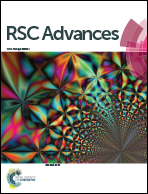Fluorescein nanocarriers based on cationic star copolymers with acetal linked sugar cores. Synthesis and biochemical characterization
Abstract
Well-defined star-shaped copolymers consisting of acetal derivatives of methyl α-D-glucopyranoside cores and polymethacrylate arms containing oxirane pendant groups have been modified with ethylenediamine (EDA) to form amphiphilic and water soluble polycations (positive zeta potential). Normal human dermal fibroblasts (NHDF) and human colon cancer cells (HCT-116) were employed to investigate the cellular uptake and cytotoxicity of diamine-functionalized star copolymers. Star-shaped polymers exhibited low cytotoxicity in NHDF cells, whereas in the case of HCT-116 cell line MTS assay resulted in the decrease of cell proliferation, which was also confirmed by Annexin-V assay indicating the increased rate of HCT-116 cell apoptosis. In the next step, the incorporated amine groups were applied for covalent conjugation of fluorescein isothiocyanate (FITC) with an efficiency of 60–85% estimated by 1H NMR. The additional conjugation experiments were performed by isothermal titration calorimetry (ITC) yielding 45–100% of polymer labeling by fluorescent FITC. The confocal laser scanning microscopy proved cell internalization of the fluorescein-conjugated star copolymers was successful. The model studies showed that this type of star copolymers can be promising carriers for the delivery of drugs.


 Please wait while we load your content...
Please wait while we load your content...